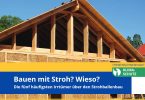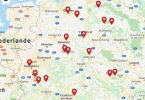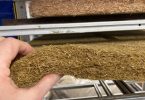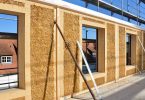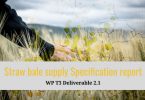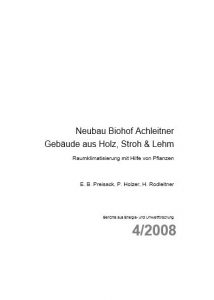
This report documents the results of a commissioned project from the program House of the Future within the framework of the impulse program Sustainable management,which was founded in 1999 as a multi-year research and technology program by the German Federal Ministry of the Interior ror transport, innovation and technology.
The House of the Future program line aims to develop concrete paths for innovative construction. Building on the low energy solar construction and the passive house concept is designed to provide better energy efficiency, increased use of renewable energy sources, renewable and ecological raw materials, as well as a stronger consideration of usage aspects and user acceptance compare to the costs conventional construction methods. This is used for the planning and realization of residential and office buildings directional steps with regard to eco – efficient construction and construction of a sustainable economy in Austria.
The quality of the results obtained is due to the above-average commitment and the overarching cooperation of the contractors, the active use of the accompanying screen management by the Austrian Society for Environment and Innovation Technology and good cooperation with the Austrian Research Promotion Agency. Project management is above our expectations and is already leading to concrete results implementation strategies of model pilot projects.
The impulse program Sustainable Management is especially focused to initiate and finance innovative and direction oriented projects results. Therefore they are published printed, but also electronically via the internet under the web address http://www.HAUSderZukunft.at
Abstract
PART A
Motivation:
The principles of Biohof Achleitner are based on a gentle interaction with nature. Hence a lot of requests an sustainable approaches were made with the construction of the central marketing, storage and processing building, including a bio-supermarket and a bio-restaurant. Biohof Achleitner also adapts the whole carpool to run with vegetable oil.
Content:
Sustainable approaches where made with choosing the building material, extensive use of renewable energies an the optimal use of solar cooling. The also new build fuelling station provides bio-fuel made of sunflowers. A special attention was turned on air conditioning using plants.
Intended Objectives:
The principles of Biohof Achleitner aim for an diversified workspace in a liveable environment and to supply the customers with healthy food and valuable bio-products.
Demonstrating of the usage of straw (mainly grown on the field of the biofarm) as insulation for a commercially used building (logistic centre 1780 m2). It was also made visible with a large wall covered with glass.
The improvement of the indoor climate and the gathering of test and observation results are the special goals of air conditioning using plants. Using these results the knowledge of functionality of indoor greenings should be improved.
Method of processing:
Adequate specification already for the concept including the innovative approaches into the thermal simulation of the building. Adjustment of the daylight concept for the purpose of solar architecture with special
consideration of the needs of plants planting according to the professional planting design and acquisition of the necessary test equipment.
Measurement and monitoring
Data
Outdoor climate
Indoor climate
Measurement and collection of operating data
Part B
Results:
The building, with a lot of visitor traffic (customers, seminar participants, excursions,produces a lot of interest: The large glass covered straw wall produces a lot of publicity for the insulation materialstraw. A similar effect is produced with the usage of plants. An enormous interest for using plants for air conditioning was already risen at the guided tours at the opening (about 10000 visitors) with the addressing of the subject and the professional explanations by Jürgen Frantz, former head of the botanic garden of the University of Thübingen and a freelancer of the planning group agsn. The results of the monitoring, done by the Donau-Universität Krems, is at the end of the report. One special point to mention is, that the thermal characteristic is even better than calcu-
lated.
Conclusion
The results meet the expectations of the project.
Author:
Bmst. Ing. Eduard B. Preisack MAS, MSc
Büro EBP
Dipl.Ing. Peter Holzer
Ing. Hans-Peter Rodleitner MAS
Donau-Universität Krems
Perg
Partner: Haus der Zukunft, Impulsprogramm Nachhaltig Wirtschaften



